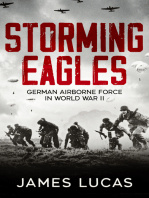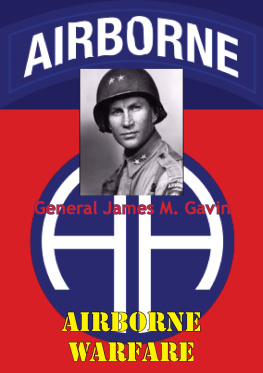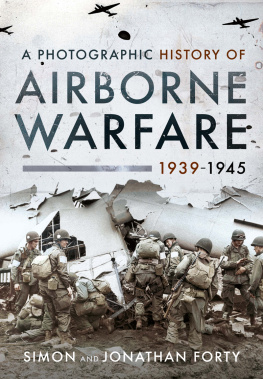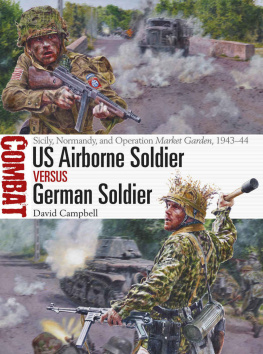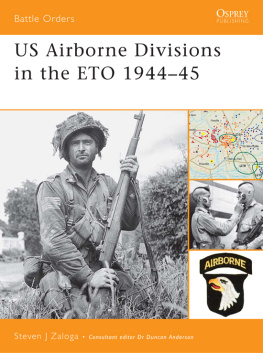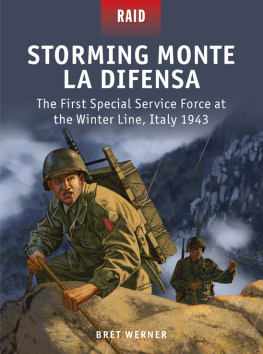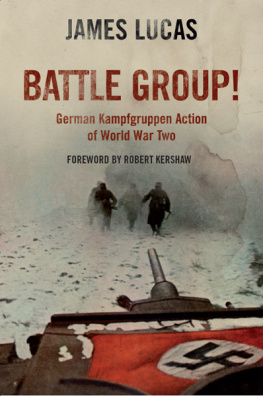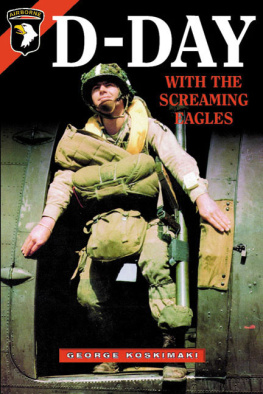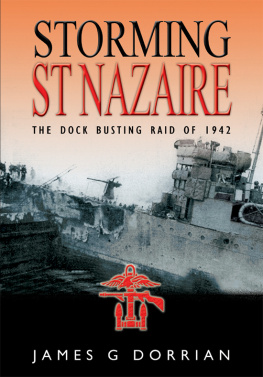James Lucas - Storming Eagles: German Airborne Forces in World War II
Here you can read online James Lucas - Storming Eagles: German Airborne Forces in World War II full text of the book (entire story) in english for free. Download pdf and epub, get meaning, cover and reviews about this ebook. genre: Non-fiction. Description of the work, (preface) as well as reviews are available. Best literature library LitArk.com created for fans of good reading and offers a wide selection of genres:
Romance novel
Science fiction
Adventure
Detective
Science
History
Home and family
Prose
Art
Politics
Computer
Non-fiction
Religion
Business
Children
Humor
Choose a favorite category and find really read worthwhile books. Enjoy immersion in the world of imagination, feel the emotions of the characters or learn something new for yourself, make an fascinating discovery.
- Book:Storming Eagles: German Airborne Forces in World War II
- Author:
- Genre:
- Rating:4 / 5
- Favourites:Add to favourites
- Your mark:
- 80
- 1
- 2
- 3
- 4
- 5
Storming Eagles: German Airborne Forces in World War II: summary, description and annotation
We offer to read an annotation, description, summary or preface (depends on what the author of the book "Storming Eagles: German Airborne Forces in World War II" wrote himself). If you haven't found the necessary information about the book — write in the comments, we will try to find it.
James Lucas: author's other books
Who wrote Storming Eagles: German Airborne Forces in World War II? Find out the surname, the name of the author of the book and a list of all author's works by series.
Storming Eagles: German Airborne Forces in World War II — read online for free the complete book (whole text) full work
Below is the text of the book, divided by pages. System saving the place of the last page read, allows you to conveniently read the book "Storming Eagles: German Airborne Forces in World War II" online for free, without having to search again every time where you left off. Put a bookmark, and you can go to the page where you finished reading at any time.
Font size:
Interval:
Bookmark:
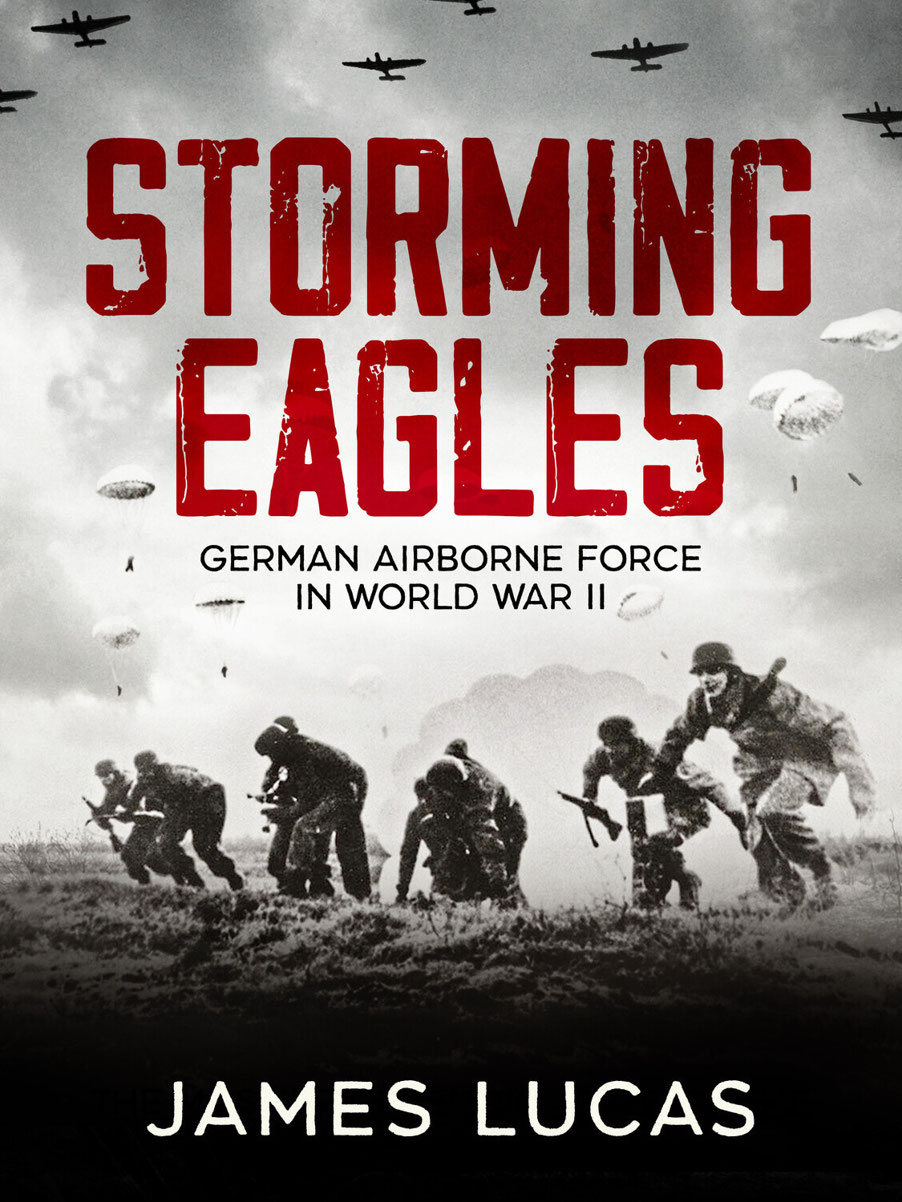
Dedication
Acknowledgements
Preface
Introduction
1940
1941
1942
1943
1944
1945
Epilogue
Fallschirmjaeger Formations and Units
Uniforms, Equipment and Weapons
Chronology of Airborne Operations
Select Bibliography
Copyright

This book is dedicated, in general, to all the British Armys former opponents opponents but never enemies in the German Airborne formations during the Second World War. Specifically, it is dedicated to those against whom I fought in Tunisia. To Paul Beck, who took me prisoner, to Hans Teske, who now serves with me on the British Section of La Confdration europenne des Anciens Combattants, to Franz Josef Kugel, Rudi Hambuch, Willi Keuter, all of whom served in the Sturm Regiment Koch/Schirmer; as well as to Guenther Raebiger, a very special friend and to all of his Regiment who fought against mine at Cassino.
My interest in the Fallschirmjaeger extends back more than four decades, to the years of the Second World War. I met German paratroops in combat first in North Africa and then during the Italian campaign. Over the long span of years since the end of the Second World War, it has been my privilege to attend their reunions and a pleasure to greet them at the Museum in which I formerly worked. More than a decade ago, plans for writing this book were formulated and on the basis of my own experiences as well as correspondence entered into, conversations recalled and anecdotes remembered, the book began to take shape. It is, however, around the generous response of the Fallschirmjaeger to my requests for help that so much of the text has been constructed.
Naturally, among the replies received in response to my appeal, there were a great many letters which recorded the same incident in a battle or a campaign. In order to avoid repetition I have either incorporated the details supplied so that they form part of the text of the book, or have amalgamated various elements of them so as to create a single narrative. This means that in such instances, where only fragments of letters or snippets of discussions have been used, the correspondents have not been mentioned by name.
Inevitably, the greatest number of those former Jaeger who wrote and told me of their experiences are not acknowledged. I regret this, but assure them all that their contributions were as vital to the writing of the book as were the accounts of those whose names are recorded.
To all those who sent photographs, maps and other memorabilia I am deeply grateful. In particular it is a pleasure to acknowledge the outstanding generosity of Oberst Busch, Reinhold Hoffmann, Rudi Hambuch, Michel Klein, Adolf Strauch, Hans Teske, Brian Davis and George Harper.
I am also grateful to those archives and museums, both here and in Germany, whose staff have been of outstanding help. To the staff of Arms and Armour Press; to Beryl, David and Tony, who produced a book from the typescript; and to my agents, Sheila Watson and Mandy Little, go also my sincere thanks for their skill and patience.
No work of mine can ever be begun or completed without the encouragement and support of my beloved wife Traude, whose help I acknowledge together with that of our eldest granddaughter, Victoria, who carried out a great deal of the research.
It is, however, to all ranks of the Fallschirmjaeger organization that my chief thanks go, for their comradeship and support in helping to produce this record of their service.
James S. Lucas, London, 1988
On a star-filled night in April 1943, I was one of a three-man reconnaissance patrol in the Oued Zarga hills of Tunisia. Lieutenant Sidney Keyes, the patrol leader, gave a sudden urgent hand-signal at which Corporal Gibson and I dropped to the dew-wet grass. Through the stillness of the night I heard our officer giving orders in German. He stopped and then called Gibson and me forward to where a figure was seated on a rock. It was an enemy soldier. His alert attitude suggested that he was still alive, but on closer inspection it was clear that he had been dead for some time. His right hand gripped tightly the upper part of his rifle barrel. His left arm was a prop that held him erect on the rock upon which he had died.
In the afternoon of the following day the Corporal and I went out again into the valley below the crest of Oued Zarga to bring back any documents which the dead German might have in his pockets. The corpse sat as we had seen him by starlight: head erect as if on the alert. There was no wound to show how he had died no blood, no torn clothing. From his attitude it was clear that this soldier had met death in those bleak and barren hills with complete calm and fearlessness. He must have died alone with no comrade to comfort him as he passed, for the identity disc was unbroken. Under his overcoat I noticed that the uniform jacket carried above the right breast pocket, not the standard, square-winged Army eagle, but the more expressive and natural, free-flying Luftwaffe variant. His jacket shoulder straps were bordered in green. I was looking at the first German paratrooper I had ever seen.
Only weeks later a counter-attack launched by men of the 5th Fallschirmjaeger Regiment against my unit, C Company of 1st Battalion, The Queens Own Royal West Kent Regiment, killed, wounded or captured that Company. During our few weeks of captivity, for we were soon liberated, we prisoners talked a lot about the events of that particular morning: of the fury of the German attack and of the skill with which it had been carried out.
After Tunisia, I met the Fallschirmjaeger again. Not just in war-time situations in Italy, but more frequently, in post-war years, when groups of them visited me at the Imperial War Museum or when I attended their regimental reunions. The Fallschirmjaeger ex-Service Association is without doubt the best-organized and -attended in Germany, for the loyalty, the comradeship, each to the other, which once bound those soldiers in war has been maintained undiminished across more than four decades of civilian life.
This book is the fulfilment of the long-held wish to tell the story of the German airborne soldiers in their own words, since much of the narrative is from their letters or has been taken from conversations with them. To write this book has been a double pleasure. First, because the Fallschirmjaeger were an lite force who were given the hardest military tasks to perform and, as a consequence, have the most exciting stories to tell. Secondly, because these men have been my comrades for many decades now and what greater pleasure can there be for a writer than to describe the exciting stories of his friends?
In the autumn of 1935, Archibald Wavell, an officer of the British Army, attended the Red Army manoeuvres in Soviet Russia. The report which he wrote at the end of those exercises included the sentence, If I had not seen it for myself, I should not have believed such a thing to be possible. The military operation that had moved a highly experienced and much decorated soldier of the Great War to use such words was a combined, mass airborne one, the first that he had witnessed. What he had seen was 1,000 men dropping by parachute and the airlanding of transport planes carrying another 2,500 fully armed men together with their heavy weapons. These two types of airborne soldier had then carried out conventional infantry attacks covered by fire from machine-guns, mortars and light artillery.
Next pageFont size:
Interval:
Bookmark:
Similar books «Storming Eagles: German Airborne Forces in World War II»
Look at similar books to Storming Eagles: German Airborne Forces in World War II. We have selected literature similar in name and meaning in the hope of providing readers with more options to find new, interesting, not yet read works.
Discussion, reviews of the book Storming Eagles: German Airborne Forces in World War II and just readers' own opinions. Leave your comments, write what you think about the work, its meaning or the main characters. Specify what exactly you liked and what you didn't like, and why you think so.

